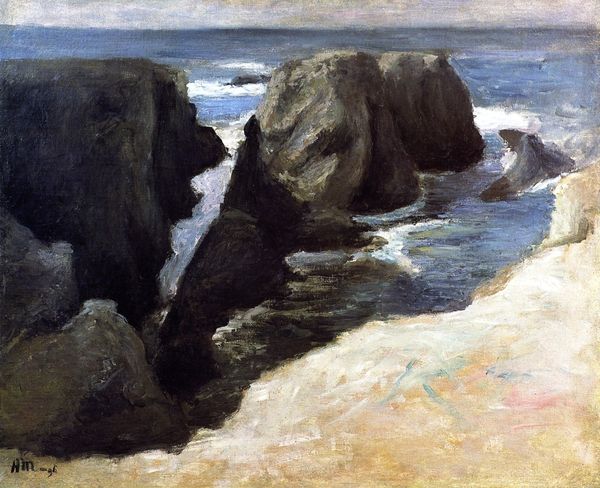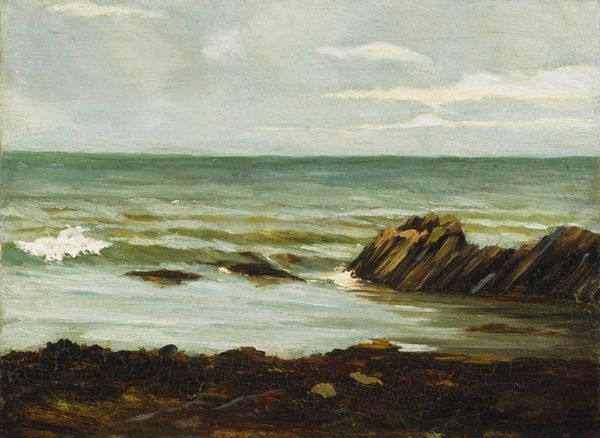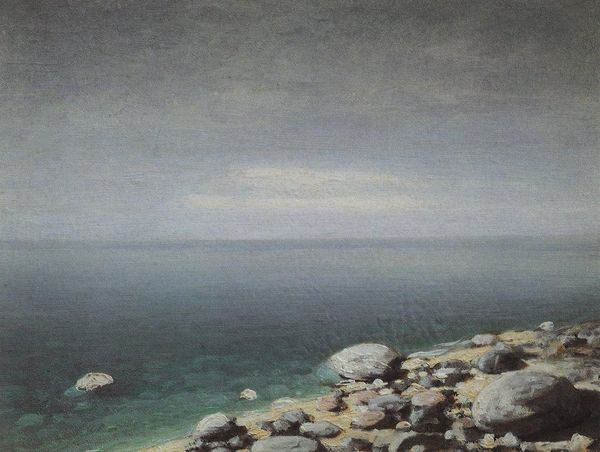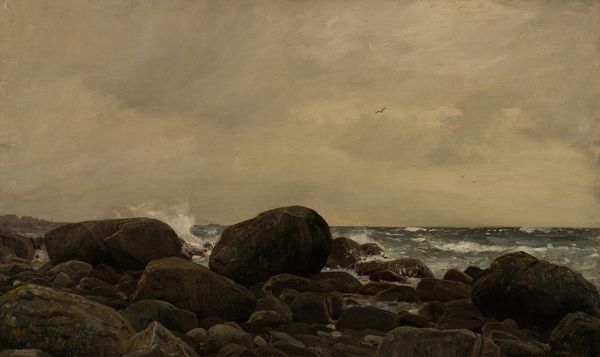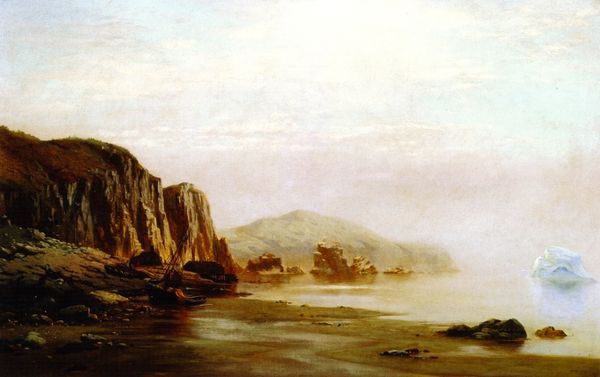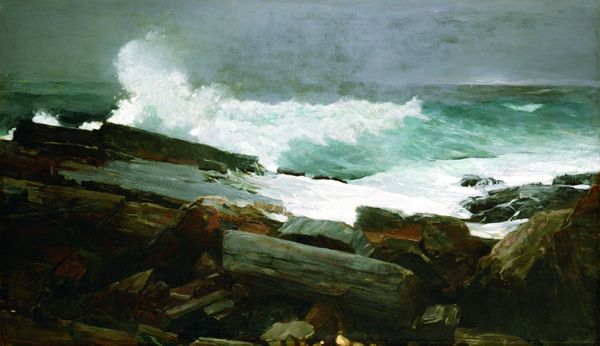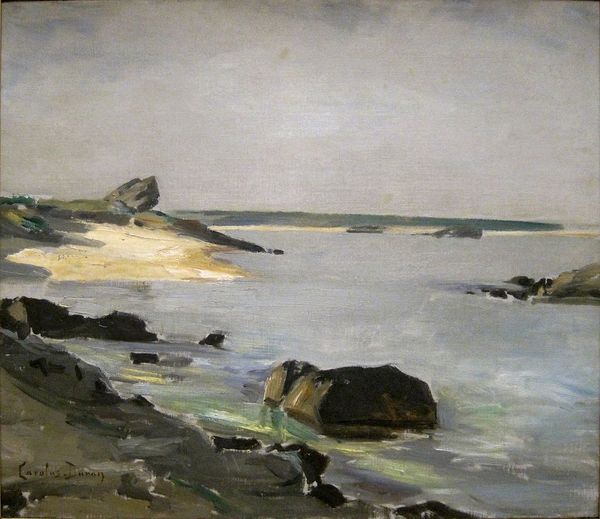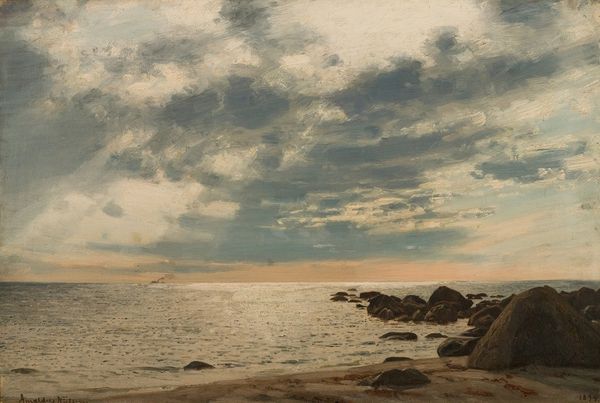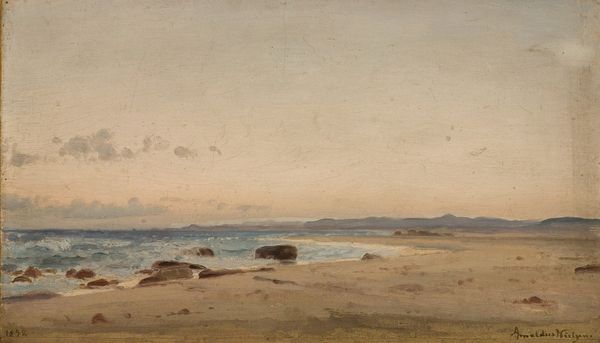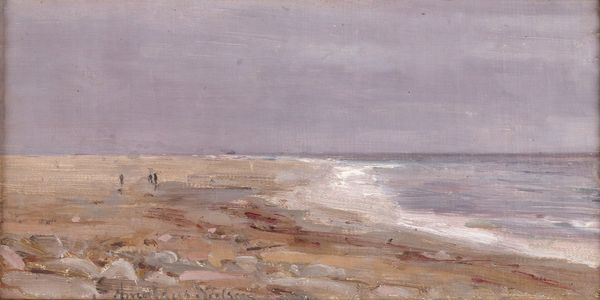
Copyright: Public domain
Editor: This is "Seascape (Guarujá)" by Jose Ferraz de Almeida Junior, painted in 1895. It’s an oil painting showing a rocky beach scene. I’m really struck by the contrast between the dark, almost brooding rocks and the hazy, light-filled sky. What can you tell me about it? Curator: Well, viewing it through a historical lens, I immediately consider the rise of plein-air painting and its impact on art institutions at the time. The direct engagement with the landscape became intertwined with burgeoning nationalist sentiments. Editor: So, how would painting a scene like this relate to national identity? Curator: Landscape paintings often serve as a visual representation of a nation’s territory, becoming symbols of pride and belonging. But let's consider *where* Almeida Junior chose to paint. Why this particular beach? Who would have been viewing it then? These paintings enter the public sphere and subtly shape perceptions. Editor: That makes me wonder if he was intentionally trying to depict a "Brazilian" landscape. It looks quite universal, you know? A coastline with rocks and the ocean. Curator: Precisely. Is it realism, or is it constructing a certain visual language linked to nationhood? Consider how this artwork may have been exhibited and received, how it was critiqued and ultimately, how it contributed to the artistic landscape of Brazil and its representation of itself. It’s all intertwined, isn’t it? Editor: That’s fascinating. I hadn’t thought about how even seemingly straightforward landscapes can carry such layered cultural meaning. Thanks for that deeper perspective. Curator: My pleasure! It’s these hidden layers that make art history so endlessly interesting.
Comments
No comments
Be the first to comment and join the conversation on the ultimate creative platform.
